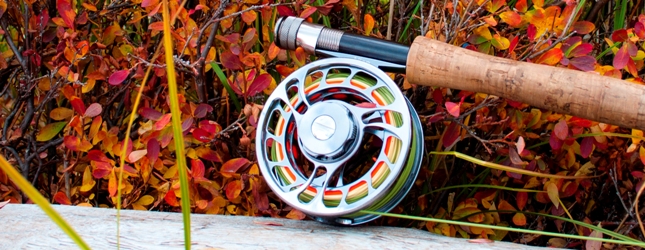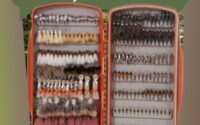| Disclosure: Just to be open and honest the buttons and links you click on in the website will in most cases take you to another website where you can purchase the products I am reviewing. As an Amazon Associate I earn from qualifying purchases. |
Can You Fly Fish Without Backing? Is it Optional?
Quick Post Navigation
- Introduction
- What is Backing in Fly Fishing?
- Can You Fly Fish Without Backing?
- Understanding the Fly Fishing Setup
- Why Backing is Generally Recommended
- Scenarios Where Backing May Not Be Necessary
- The Role of Backing in Line Management
- Considerations Before Skipping Backing
- Expert Opinions on Using Backing
- Alternative Setups Without Backing
- The Impact of Not Using Backing on Gear
- Personal Stories
- Pros and Cons of Skipping Backing
- Final Thoughts and Recommendations
- Conclusion
- FAQs
- “Check out some of our other Buying Guides”
Introduction
Fly fishing is an art form as much as a sport, requiring not just skill but also a deep understanding of the equipment involved. Among the many components of a fly fishing setup, the role of the backing on a fly reel is often debated among anglers. Can you really fly fish without it? Let’s delve into the mechanics and considerations of fly fishing setups to answer this question.
What is Backing in Fly Fishing?
Backing is a thin, strong line that is tied onto the spool of the fly reel before the fly line itself. Its primary purpose is to fill the reel so that the fly line can be wound more tightly and uniformly. This setup is crucial because it prevents the fly line from coiling or tangling during rapid runs by fish.
Can You Fly Fish Without Backing?
Technically, yes, you can fly fish without backing, but this comes with several limitations and risks. Backing provides additional line length which is invaluable when fishing for species that make long runs. Without it, you’re at a higher risk of running out of line if you hook a particularly large or fast fish.
Understanding the Fly Fishing Setup
A fly fishing reel setup typically includes the reel, the backing, the fly line, and the leader. The backing is the first line loaded onto the reel and plays a foundational role in both capacity and stability of the line system.
Why Backing is Generally Recommended
The primary reason backing is recommended is to increase the overall length of line available on the reel, which is essential when targeting larger fish that can run far distances. Additionally, backing helps to create a larger diameter on the reel’s spool, which enhances retrieval rates and reduces line memory.
Scenarios Where Backing May Not Be Necessary
In scenarios where you’re targeting smaller fish or fishing in confined areas such as small streams or ponds, the likelihood of fish making long runs is reduced, and thus, the need for backing may be less critical.
The Role of Backing in Line Management
Backing significantly influences line management by providing a cushion that helps maintain the integrity of the fly line. It also affects the casting distance by enabling a smoother and more controlled release of the line.
Considerations Before Skipping Backing
Before deciding to forego backing, consider the type of fish you are targeting and the locations you are fishing. Skipping backing could limit your ability to handle stronger, larger fish or adapt to different fishing environments.
Expert Opinions on Using Backing
Many seasoned anglers and professionals argue that while you can technically skip backing, doing so may compromise your ability to handle diverse fishing challenges effectively. It is generally seen as better to be prepared with backing than to find yourself lacking in critical moments.
Alternative Setups Without Backing
Some anglers choose to use a thicker main fly line to compensate for the absence of backing, but this can affect the reel’s capacity and the overall handling of the line. Adjustments to reel settings might also be necessary to accommodate a different line setup.
The Impact of Not Using Backing on Gear
Skipping backing can lead to increased wear and tear on your fly line and reel, as there’s less protection against the mechanical strain caused by fish runs. The long-term impact can include higher maintenance costs and potential gear failure.
Personal Stories
Many experienced anglers share stories of times when backing has either saved the day during unexpected monster catches or when the absence of it led to lost opportunities. These anecdotes serve as practical lessons in the importance of backing.
Pros and Cons of Skipping Backing
The advantages of not using backing include a simpler setup and potentially less weight. However, the disadvantages, such as reduced line capacity and increased risk of gear damage, often outweigh the benefits.
Final Thoughts and Recommendations
While you can fly fish without backing, it is generally advisable to use it to maximize your fishing potential and protect your equipment. Tailor your setup based on your specific fishing conditions and target species to achieve the best results.
Conclusion
To sum up, while it is possible to fly fish without backing, doing so may not be advisable depending on your fishing circumstances and goals. It is important to weigh the benefits against the potential risks and make an informed decision based on your specific needs.
FAQs
Q) What is the minimum amount of backing I should use if I decide to include it?
A) Most anglers recommend at least 50-100 yards of backing, depending on the fish size and type.
Q) Can I replace backing with something else to save space on the reel?
A) It is not recommended to replace backing with non-standard materials as they may not provide the same level of performance or protection.
Q) Is there a difference in the type of backing used for saltwater versus freshwater fly fishing?
A) Yes, saltwater environments generally require stronger, more corrosion-resistant backing due to the larger, more powerful fish and harsher conditions.
Q) How often should I replace the backing on my fly fishing reel?
A) Backing should be checked for wear and tear annually and replaced every few years, or more frequently if it shows signs of degradation.
Q) Does the color of the backing matter?
A) The color of the backing is largely a personal preference and does not affect the performance, though some colors may be easier to see in certain fishing conditions.



